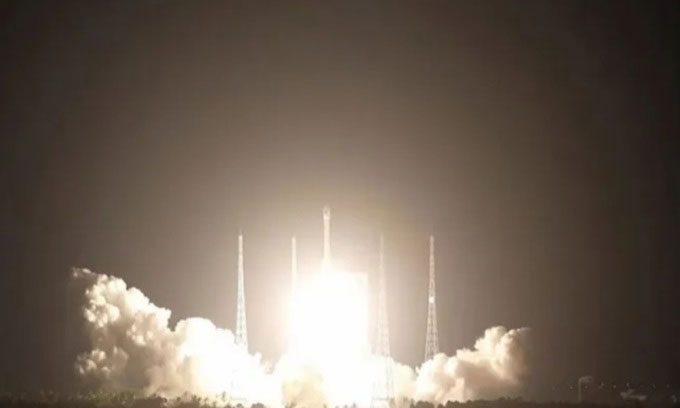Chinese authorities have not disclosed any information about the satellite launched on the Long March 7A rocket, other than describing it as a technology test satellite for communication.

Long March 7A rocket carrying TJS-10 satellite launched on November 3. (Photo: CASC)
The Long March 7A rocket lifted off from the Wenchang Satellite Launch Center on the coast at 21:54 on November 3, according to Space. The payload was the Tongxin Jishu Shiyan Weixing-10 (TJS-10) satellite, developed by the China Academy of Launch Vehicle Technology (CASC), which announced a successful launch within an hour after liftoff. According to Xinhua, this satellite is primarily used for testing high-speed and multi-band communication technology.
The TJS-10 satellite is positioned in a Geostationary Transfer Orbit (GTO) and will soon maneuver into the geostationary belt approximately 35,786 km above the Earth’s surface. However, both CASC and media outlets have not provided any further details about the satellite. The lack of information and the operational status of TJS satellites have attracted the attention of many analysts, as this may be a generic name for satellites serving a variety of purposes.
For instance, the TJS-3 communication test satellite was launched in December 2018. Nevertheless, it has frequently approached satellites from other countries. Other satellites in the TJS series are suspected to be used for missile early warning tests and intelligence signaling. This series is developed by the Shanghai Academy of Spaceflight Technology (SAST), one of the key branches of CASC.
The Long March 7A is a 60-meter tall version of the Long March 7 rocket, designed to deliver spacecraft to GTO. It is also a non-toxic alternative to the Long March 3B rocket. The standard Long March 7 rocket has been used to deliver cargo spacecraft to China’s Tiangong space station. China plans to launch over 200 spacecraft from 70 missions in 2023.





















































